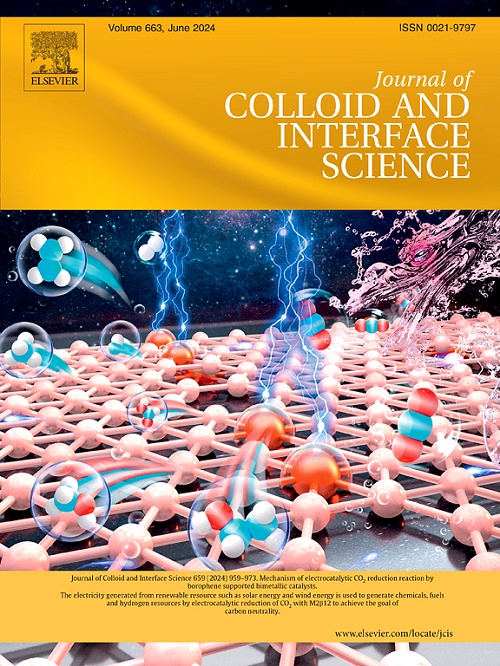用于耐用超快钠离子电池的阳离子空位修饰硒化铋纳米片
IF 9.4
1区 化学
Q1 CHEMISTRY, PHYSICAL
引用次数: 0
摘要
基于转换和合金反应的高性能金属硫族化物阳极由于其较高的理论容量,在下一代钠离子电池(sib)中具有广阔的应用前景。然而,金属硫族化合物固有的局限性,包括不理想的导电性和次优的离子扩散动力学,阻碍了高速率性能和大规模应用。本文开发了一种具有阳离子空位(DBS)的二维超薄Cu杂原子掺杂Bi2Se3纳米片作为SIBs的阳极,具有高容量和优异的速率性能。DBS的电导率通过表面拓扑状态的贡献和结构缺陷对电子结构的调节而提高。此外,根据密度泛函理论(DFT)的计算,改性后的晶体结构表现出更好的离子传输能力,更高的Na+吸附能和更多的吸附位点。因此,DBS电极具有极化电位降低、电容电荷存储速度快、转换-合金反应更全面的特点,从而实现了高比容量(0.2 ag−1时528 mA h g−1)、高倍率性能(10 ag−1时383 mA h g−1)和长循环稳定性。这种优异的性能增强了硬币型和袋式DBS//Na3V2(PO4)3@C全电池的吸引人的电化学性能。本文章由计算机程序翻译,如有差异,请以英文原文为准。

Cation vacancy modified bismuth selenide nanosheets toward durable and ultrafast sodium-ion batteries
High-performance metal chalcogenide anodes based on conversion and alloy reaction are promising for the next generation of sodium-ion batteries (SIBs) due to their high theoretical capacity. However, the intrinsic limitations of metal chalcogenides, including inadequate electrical conductivity and suboptimal ion diffusion kinetics, impede high-rate performance and large-scale applicability. Herein, a two-dimensional ultrathin Cu heteroatom-doped Bi2Se3 nanosheet with cation vacancies (denoted as DBS) has been developed as an anode for SIBs, exhibiting high capacity and superior rate performance. The electrical conductivity of DBS is enhanced by the contribution of surface topological states and the regulation of electronic structure due to structural defects. Furthermore, the modified crystal structure demonstrates improved ion transport capabilities, elevated Na+ adsorption energy, and a greater number of adsorption sites, as substantiated by density functional theory (DFT) calculations. Consequently, the DBS electrode exhibits reduced polarization potential, fast capacitive charge storage and a more comprehensive conversion-alloy reaction, thereby achieving a high specific capacity (528 mA h g−1 at 0.2 A g−1), large rate performance (383 mA h g−1 at 10 A g−1), and long cycling stability. This superior performance enhances the appealing electrochemical properties of both coin and pouch-type DBS//Na3V2(PO4)3@C full cells.
求助全文
通过发布文献求助,成功后即可免费获取论文全文。
去求助
来源期刊
CiteScore
16.10
自引率
7.10%
发文量
2568
审稿时长
2 months
期刊介绍:
The Journal of Colloid and Interface Science publishes original research findings on the fundamental principles of colloid and interface science, as well as innovative applications in various fields. The criteria for publication include impact, quality, novelty, and originality.
Emphasis:
The journal emphasizes fundamental scientific innovation within the following categories:
A.Colloidal Materials and Nanomaterials
B.Soft Colloidal and Self-Assembly Systems
C.Adsorption, Catalysis, and Electrochemistry
D.Interfacial Processes, Capillarity, and Wetting
E.Biomaterials and Nanomedicine
F.Energy Conversion and Storage, and Environmental Technologies

 求助内容:
求助内容: 应助结果提醒方式:
应助结果提醒方式:


